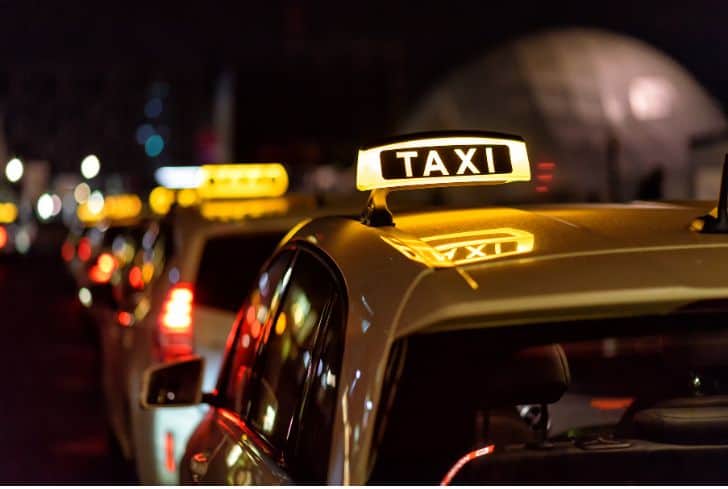The impacts of greenhouse gasses, for example, environmental pollution, respiratory diseases, and global warming, are well documented. Many factors contribute to increased levels of these harmful gasses, including cutting down trees, using fossil fuels, and emissions from industries and vehicles.
One factor that is consistently ignored yet contributes more to greenhouse emissions is personal transportation, driving personal cars, to be precise. Those living in highly populated cities feel the impacts of emissions by vehicles.
And with technology traveling at lung-bursting speed and a rapidly expanding middle class, car ownership is projected to skyrocket. This means the universe will be polluted more than ever, and that’s where public transportation comes in!
Public transportation is a form of local travel that enables more people to commute together along designated routes. Typical examples of types of public transportation include buses, trains, and trams. High-speed rails, airlines, and coaches dominate public transportation between cities.
Most public transport services operate on stipulated timelines. Some transportation systems operate on a full capacity basis, which means the vehicle will not start until it’s full. However, many cities worldwide provide shared taxis when the essence of time is a factor.
Various Public Transportation Modes
Public Transportation Consists of a variety of Modes, such as:
- Buses
- Cable cars
- Commuter trains
- Monorails and tramways
- Light rail
- Subways
- Streetcars and trolleys
- Taxi
- Vanpool services
- Ferries and water taxis
- Paratransit services for senior citizens and people with disabilities
Some of them are discussed here.
Bus

Bus transport is one of the oldest and most common modes of transportation aimed at facilitating the movement of people within a city or to remote locations. It has the advantage of being affordable and convenient if there is no traffic. Long ago, buses were managed by individuals, but these days, there is an upsurge in clean and efficient bus services.
Most federal governments want all public transport buses to be sparkling clean, embrace the cashless models, be economical and produce fewer emissions. The bus services are also required to be accessible to people with disabilities.
Train

Train transportation is rapidly growing. This is evident by the sea of humanity lining up at railway stations to commute to and from work. Most governments are ramping up the growth of this mode of transportation by increasing the number of trains and upgrading existing ones in the busiest routes.
These governments are stepping up their efforts because trains contribute immensely to reducing traffic congestion and keeping more cars out of roads.
Specific targeted aspects include expanding railway networks, excellent travel information, and internet installation in trains. These ambitious projects should make train transportation much more attractive to enable people to leave their cars at home.
Tram

A tram goes by many names, such as tramcar, trolley, trolley car, or streetcar, depending on your city. It’s a rail vehicle that operates on tracks laid on city streets or segregated routes. The systems or tracks that trams operate on are called tramways.
Trams are mostly operated by electricity and are found in large cities with high demand for public transportation. They are also best suited for large cities because they can transport many passengers.
Light Rail

This is a mode of urban public transport that lies between a tram and a train. Light rail operates at higher capacity and travels long distances than a tram. However, it travels slower than a train and has more stops than a train or tram. It’s, therefore, ideal for regional routes with short distances.
Metro Systems

Metro systems have the highest performance, speed, capacity, and reliability compared to other modes of transportation. They are common in large cities across the world, such as New York, London, Rotterdam, and so on. Metro systems operate underground, so they don’t interact with normal road traffic.
Just like trams and buses, the urban regions and provinces are fully responsible for people’s safety and the underground metro systems. The metro lines are also supervised by relevant authorities to ensure transportation goes on without any glitch.
They require high initial capital investment, though, but once up and running, they are ideal for efficient functioning and quality of life in major cities across the world.
Regional Taxi

This is, ideally, public transportation on demand and offers door-to-door transportation. The benefit of regional taxis is that they travel to destinations where traditional public transportation modes don’t. The pricing of regional taxis lies between regular taxis and public transport.
Ferry

A ferry is a merchant vessel used to carry passengers, and sometimes vehicles and cargo, across a body of water. Ferries form a part of the public transport systems of many waterside cities and islands, allowing direct transit between points at a capital cost much lower than bridges or tunnels. A passenger ferry with many stops is sometimes called a water bus or water taxi.
Car Pool

This transit system allows groups of people to share rides similar to a carpool but on a larger scale with concurrent savings in fuel and vehicle operating costs.
The key concept is that people share the ride from home or one or more common meeting locations and travel together to a common destination or work center.
Vanpools have a lower operating and capital cost than most transit vehicles, but due to their relatively low capacity, vanpools often require subsidies.
Benefits of Public Transportation
The benefits of public transportation can be classified as economic, environmental, or social.
Economic Benefits
Some of the main benefits under this category are that public transportation:
1. Reduces Congestion
Urban congestion is one of the greatest challenges of developed nations. Statistically, Australian cities incur a cumulative annual cost of $12.9 billion due to traffic congestion. If transport systems are not modernized in the near future, this cost could go up to $20 billion.
The solution to this nightmare lies in the expansion of public transportation. For instance, a single railway can eliminate 1000 cars from the roads.
2. Enhances Productivity
Public transportation significantly enhances opportunity and productivity by moving knowledge, labor, and skills between and within markets.
In the modern globalized world, capital, labor, and enterprise search for the most productive markets, promoting healthy competition and symbiotic economic growth. Investing in remarkable public transportation instigates a series of economic growth.
3. Increases Land Value
Improved access to public transport has been shown to increase land and property value. Planning that puts public transportation development on top of its agenda rips huge benefits in the long run. Land that would have been used for parking and roads is put to profitable use, such as generating revenue for the city council.
4. Financial Benefits of Communities
For every dollar invested in public transportation, economic returns generated are $4, and for every $1 billion in investments in the sector, 50,000 jobs are generated and supported.
According to APTA, an investment of $10 million in public transportation generates about $30 million in increased business sales, and residential property values for homes near public transit with high-frequency service “performed 42% better than other areas.”
5. Saves Money
Taking public transportation instead of owning a second vehicle can save individuals significant money each month in avoiding gas, maintenance, parking, and other expenses. Household Expenses are also reduced by using public transit as the family gets rid of buying one car and maintaining and operating the car.
Environmental Benefits
Of course, public transport benefits are wide and far-reaching. From an environmental perspective, public transport:
1. Ensures a Cleaner Ecosystem
Public transportation significantly reduces the number of cars on the road. This means less pollution from motor vehicle emissions. Fumes produced by vehicles can lead to respiratory diseases.
Few cars on the road mean a reduction in the possibility of these dangerous diseases. A clean environment boosts living standards and brings immense benefits to the economy.
2. Prevents Global Warming

As the impacts of global warming become more apparent, world leaders are looking for ways to bring down these effects. One of the easiest sectors to deal with is transportation, which involves fewer automobiles on the roads.
Cars emit greenhouse gasses, which are responsible for global warming. By reducing the number of vehicles, the amount of greenhouse gas produced will not be enough to cause global warming.
3. Reduces Carbon Footprint
Public transportation offers an immediate alternative for individuals seeking to reduce their energy use and carbon footprints. This action far exceeds the benefits of other energy-saving household activities, such as using energy-efficient light bulbs or adjusting thermostats.
Social Benefits
From the social point of view, public transport;
1. Improves Health
Bringing health policies in line with transport can significantly reduce the burden on health services by encouraging active lifestyles. Public transport ensures citizens are at their best healthwise by encouraging them to walk to bus and railway stations while alleviating the stress that comes with driving a car on congested roads.
Research shows that every hour spent driving a car increases the possibility of obesity by more than 6%. Conversely, each additional kilometer walked per day was associated with a 4.8% reduction in the likelihood of obesity.
2. Benefits the Aging Population
Research studies indicate that the number of people older than 65 years is projected to go up from 14% in 2006 to 22% by 2030.
Older adults heavily depend on public transport to access essential services. Public transport authorities must work hard to cater to this aging population.
3. Freedom and Increased Mobility
Many people cannot drive, and even those who can would appreciate the ability to walk, cycle, or take public transit, at least when required. Public transportation allows them personal mobility to get to work, school, grocery store, doctor’s chamber, or friends without having to engage a friend or relative to drive them.
Millions of non-drivers, specifically children, are usually stuck up in automobile-dominated suburban locales where they must depend on others for rides.
4. Frees Up Time

In public transportation, passengers don’t have to drive, allowing them to use their time and attention for other activities. They can read, work, study, or be entertained during transit instead of focusing on the road.
This can also lead to shorter commute times. Unlike driving a car, transit riders have the freedom to sleep, read, write, relax, and engage in various tasks while traveling.
5. Public Transportation is Safer
Choosing public transport is often safer than driving a car. Public transit vehicles are regularly maintained and operated by trained professionals. Transit operators undergo extensive training, typically more than the average car driver (with a minimum of 120 hours of training).
They also receive regular refresher training to ensure safety standards are maintained. This emphasis on training and maintenance contributes to the overall safety of public transportation compared to personal car travel.
In fact, a person can reduce his or her chance of being in an accident by more than 90% simply by taking public transit instead of commuting by car. Traveling by public transportation is 10 times safer per mile than traveling by automobile.
6. Social Connections Increase
Robert Putnam, the author of Bowling Alone, said that for every 10 minutes of additional travel time by car, social connections are reduced by 10%. Millennials consider public transportation as the best option for digital socializing and among the best for connecting with communities.
Conclusion
While public transportation may not be enjoyable to many, like riding in your personal car, it plays a huge role in reducing traffic congestion, minimizing emissions, and gives you a whole lot of quality time to watch and interact with your neighbors.
Public transportation lets you relax, read a newspaper or book, and take a nap during the commute rather than experiencing the stress of driving on busy roads.
Enhancing the quality and efficiency of public transport systems is critical to encouraging individuals to shift to public transport.







